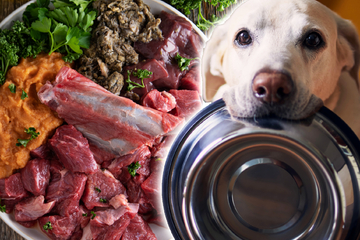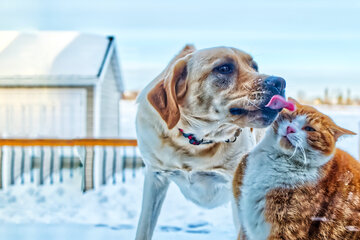Wet vs. dry dog food: What is the best dog food?
Dogs need food that's nutritionally rich and, importantly, designed for their needs. With that in mind, what is the best dog food, and what should you know about the wet vs dry food debate?
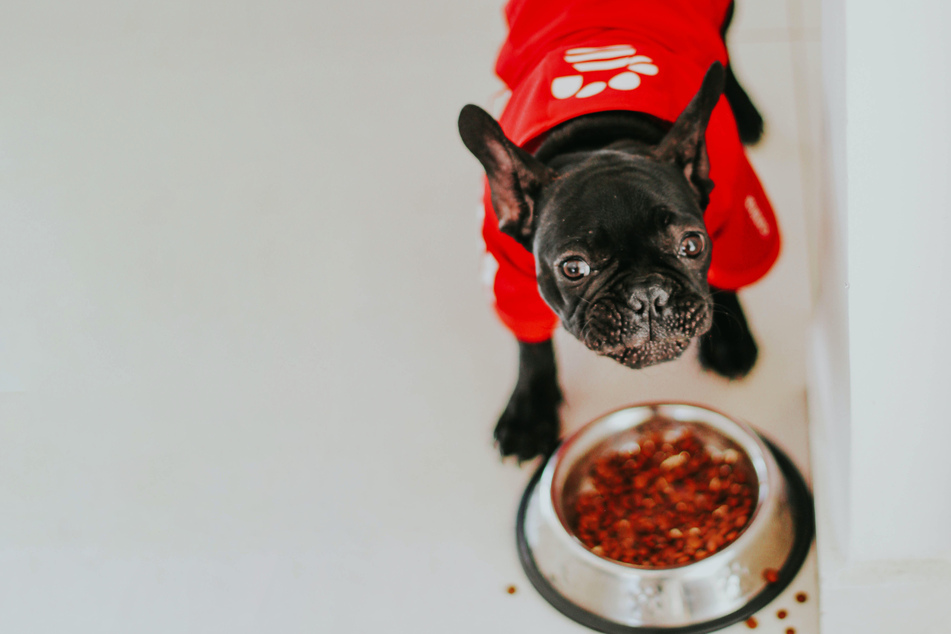
Our canine friends are like vacuum cleaners, sucking up any food available to them, whether that availability is intentional or not.
A lot of that food isn't particularly healthy, yet there are few things more important to for dogs than their nutrition. So, what ready-made dog food is actually good for them, and what do you need to know about doggy diets?
In this dog guide, TAG24 will take a look at the wet v. dry dog food debate.
What is the best dog food, what promotes nutrition, what protects your dog's teeth and mouth, and what else do you need to know when feeding your dog?
Let's find out.
Important: Here at TAG24, we try to find and report the most accurate information available, but we are not veterinarians or trained animal nutritionists. When designing a doggy diet for your darling doggo, you should always consult with your veterinarian.
Is dry dog food bad for dogs?
Dry food designed for dogs is not necessarily poor quality, but can often not be particularly good either. It's important to note that there are advantages and disadvantages to all dog food options, and it's equally important to understand what they are. There are countless dry food brands and variants, so let's take a look at what to consider when feeding your pet.
Advantages of dry dog food:
- Dogs love dry food and find it easy to feed.
- It's quick and easy.
- Dry food is inexpensive.
- Nutritional information is straight forward and clear.
- Dry food doesn't really smell.
- It stores well and keeps for a long time.
Disadvantages of dry dog food:
- Dry food is industrially processed.
- There's a significant grain content.
- It's often full of preservatives.
- It contains chemically produced, non-organic vitamins.
- Low water content and a lot of salt means your dog needs to drink lots of water to stay hydrated.
- Food allergies can be promoted by dry food intake.
Different dry foods vary in quality. Many suppliers use extremely low quality ingredients, as well as preservatives and chemicals, so it is best to buy organic and high-quality dry dog food where possible.
Best dry dog foods
This question should be answered individually by each dog owner.
Here it depends not only on the ingredients, but also on the individual taste. However, every owner can make sure that the food is preferably grain-free and free of preservatives.
This is a question that needs to be answered by your veterinarian and self, based on a number of factors. Whether a dry dog food is good or not depends on not only the ingredients and the health benefits or drawbacks, but on the taste as well and whether your dog will be happy eating it.
Here's what to consider when finding the best dry dog food:
- Will your dog eat it (i.e. does it taste okay)?
- What are the health benefits?
- What are the health drawbacks?
- How much does it cost? Can you afford it?
- How much should you feed at a time?
- Does it need to be supplemented with other forms of dog food?
- Is it grain-free?
- Is it free of preservatives?
- Was it ethically sourced?
- What are the ingredients?
It's important to note: Dry dog food is, in general, a mixture of different ingredients that have been dried out into a biscuit-like form. In many cases the original ingredients are actually quite similar to wet food ingredients, but you need to watch how much salt is included as this is often part of the drying process.
How much dry food should I feed my dog?
The specific quantity of dry dog food that you give your perfect pooch is based on its weight, size, and the type of food. When it comes to particular quantities, it is the job of your veterinarian to give you this sort of advice. This is an important topic, though, as a dog's weight and diet has a direct relationship with the quality of its health.
Here are some factors that influence how much food to give your dog:
- How old is your dog? Puppies, for example, consume more energy and need richer and more nutritionally-packed food than older dogs.
- What is in the food? If your dry food has a high fat content, or is full of chemicals, it might be best to make your dog's diet based around wet food.
- How much does your dog exercise? If your dog does tons of exercise, it is going to be able to eat more food while staying strong and healthy.
- How big is your dog? Your dog's size and dimensions impact how much food, and what kinds of food, it eats.
- What other food are you giving it? If you are also giving your dog wet food, then you should only give it a small amount of dry food. The same goes for the other way around as well.
Ultimately, the best way to judge how much dry food to give your dog is to follow the package instructions, as well as the advice of your vet.

Is wet food good for dogs?
Much like dry dog food, wet dog food is good for your dog as long as you buy a good brand and provide it with the right quantity. On top of this, it's important to also pay attention to your dog's individual preferences. Does your dog seem to enjoy eating dry food more than wet food? If the answer is yes, then wet food might not be your best bet.
Advantages of wet dog food:
- You save time by just opening a can and pouring it out in a bowl.
- There is an exhaustive selection of inexpensive variants.
- You will only give it one can at a time, making the nutritional information on each can more accurate than with dry food (which you buy in bulk).
- Closed cans have an incredibly long shelf life.
Disadvantages of wet dog food:
- Once opened, cans of wet dog food are quickly perishable/
- Many brands have a high grain content.
- Preservatives are often used.
- Often full of chemically produced, non-organic vitamins.
- Can promote food allergies.
Different wet food suppliers offer vastly different qualities. Some of the best wet dog food is better than any dry food you can get, but some of the worst is exactly the opposite. Again, dog owners should consult with their vet and get advice before designing their dog's diet.
What is the best wet dog food?
Your dog should be given high-quality wet food that is preservative and grain free. This food needs to fit your dog's individual needs, be nutritionally rich, and give your dog the strength to do everything it needs to do. We cannot give advice on particular brands, but these are all important things to consider.
Here's what to consider when finding the best wet dog food:
- Is this wet food designed and formulated for your dog's stage in life? Different foods are designed for dogs of different ages.
- How much fat and protein is included in the product?
- Are the ingredients natural or entirely chemical?
- Is the protein source named on the package, or is it called something vague that doesn't provide much information?
- Are there any grains or vegetables in the mixture?
- Is the food "Complete and balanced" or "Supplemental"? What is the manufacturers purpose for this wet dog food?
- All the same points we laid out in regard to dry dog food apply here too.
Important: There are a huge variety of wet dog food, many available from your local supermarket. It is often better to go to a pet store, as they will have higher quality products available. It's worth noting, though, that they are likely to be a tad more expensive.
How much wet food should I feed my dog?
In general, less wet food should be consumed by your dog each day. The most common schedule people keep is to feed their canine friend one wet food meal in the evening and give them a reasonable amount of dry food throughout the day. Of course, this is dependent on not only your choice of food, but on the needs of your dog as well.
Please note: There are a number of factors that also influence how much wet food should be consumed by your dog, but these factors are almost identical to the factors that govern dry dog food consumption. In other words, read that section for a comprehensive breakdown.
Wet dog food vs dry: What is good dog food?
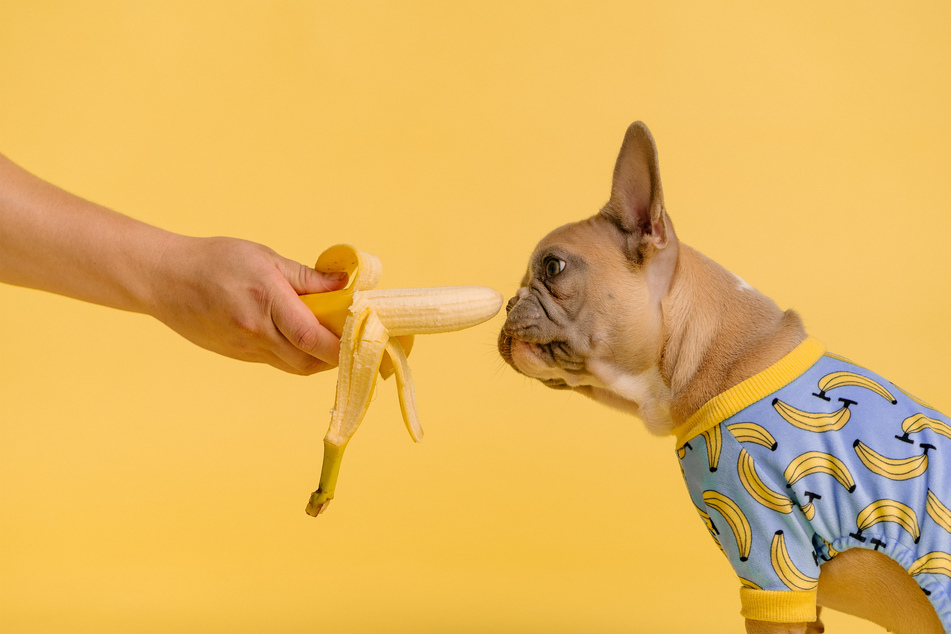
Good dog food isn't a debate between dry and wet food, but a conversation about nutrition and what should and shouldn't be consumed by your darling doggo. There are an assortment of things that are good, and an assortment of things that are bad, and whatever your choice of diet, these rules must be followed.
By consulting with your veterinarian and developing a comprehensive diet based on your dog's physiological characteristics, you will ensure a longer and more vibrant life for the four-pawed fellow.
Here are the most important things to ensure when deciding upon the food you feed your dog:
- A grain-free guarantee
- As few preservatives as possible, preferably none
- Precise information about all ingredients printed on the label
- A good fit with your dog's nutritional needs
- Plenty of crude protein and crude fat, but not much sugar
- Sufficient levels of dietary fiber
Dogs should not be given anything that could challenge their stomach. On top of that, they should never be given anything with caffeine, alcohol, or chocolate in it.
Alternatives to commercial dog food
Commercial dog food might seem disgusting and expensive, but it is by-far the best way to feed your dog. These are products that have been designed specifically for dogs, and are made to keep dogs happy and healthy for a long time. While commercial dog products might sometimes seem a little expensive, if you compare them to alternatives, they're actually pretty cheap.
Here are two of the most popular alternative dog diets, for those of you who want to steer away from commercial dry and wet dog food:
How to make your own homemade dog food
There is a growing constituency of people who are opting to make their own dog food at home. It might seem like a good idea, but it is often a huge hassle and much more expensive than buying the standard stuff. Dogs have sensitive and difficult-to-manage nutritional needs, so homemade dog food needs to be very carefully chosen.
In general, homemade dog food is a collection of cooked or raw foods that have been prepared specifically by a dog's humans for its consumption. This could be anything from vegetables to meat, but generally the focus is on getting dogs the fats and proteins that they need to stay healthy.
Advantages of homemade dog food:
- You know the exact ingredients that are included.
- The ingredients are fresh and of a far higher quality.
- You can adapt the meals to your dog's wants and needs.
- Dogs often love homemade food.
Disadvantages of homemade dog food:
- It's extremely time-consuming to prepare.
- The expense is often extremely high.
- You need to know what you are doing.
- It is hard to monitor the specific nutritional contents of each meal, leading to a risk of nutritional deficiency.
Homemade dog food is possibly the best alternative diet, but still needs a lot of knowledge and money to pull off well. It's best to seek out a vet's advice before you proceed.
BARF diets: Should dogs eat raw meat?
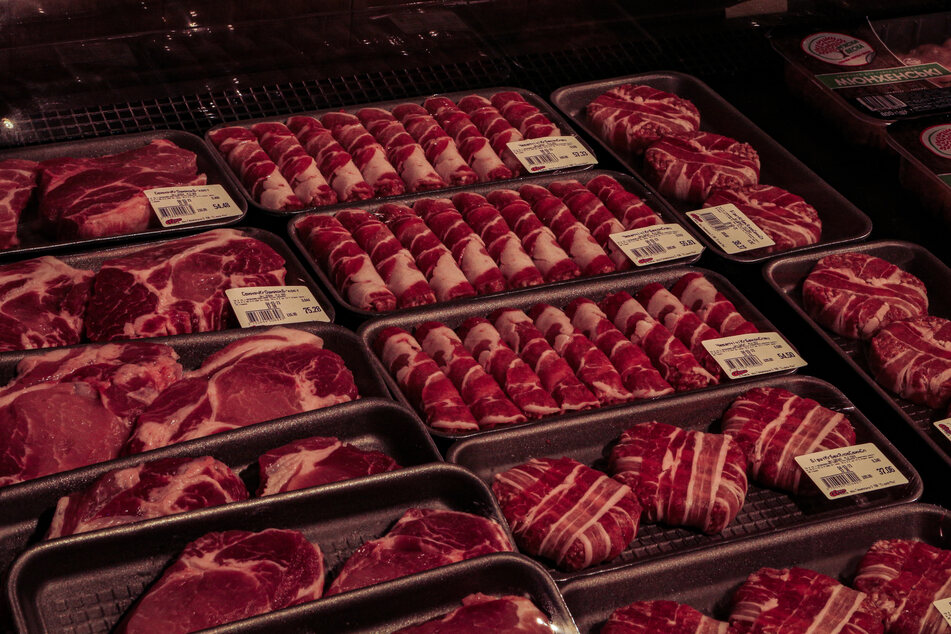
Biologically Appropriate Raw Food Diets, otherwise (unfortunately) known as B.A.R.F. diets, are food plans which focus entirely on the consumption of raw meat, vegetables, fruits, and grains. It avoids the use of ready-made food, opting instead for biological and fresh ingredients.
In many ways, B.A.R.F. diets are an excuse to give dogs raw meat and not spend lots of money on (potentially) expensive dog food. Dog food is, however, far cheaper than buying straight meat from a butcher, so at times B.A.R.F. diets are hard to justify.
Advantages of B.A.R.F.:
- You know all the ingredients included
- All ingredients are fresh and (assumedly) high quality
- Adaptable and variable
- Dogs often really enjoy the food
- Snacking is reduced as dogs don't start eating lots of biscuits all day
Disadvantages of B.A.R.F.:
- It's time-consuming
- It can be difficult to store the food for longer periods
- Intense odors can be produced, especially when raw meat is involved
- You need a solid and extensive knowledge and understanding of dog dietary needs and nutrition
- It can be far more costly than dog food
We don't recommend B.A.R.F. diets unless your veterinarian has prescribed it specifically as a way of improving your dog's health.
Nutrition is the most important thing when it comes to dog food
In some ways, dogs are not so different from humans. Every animal needs to eat, and the quality of its diet will determine its strength, its health, and how its body functions. Indeed, if an animal has a bad diet it is quite likely to live a shorter and less happy life, and this reality is something shared by both dogs and humans.
As a result, nutrition could be considered one of the most important factors in a dog's health. If you want to care for your dog properly, go and see your vet, or a dog nutritionist, and get a proper diet organized and structure for your beloved canine companion.
Cover photo: Unsplash/Jornada Produtora

